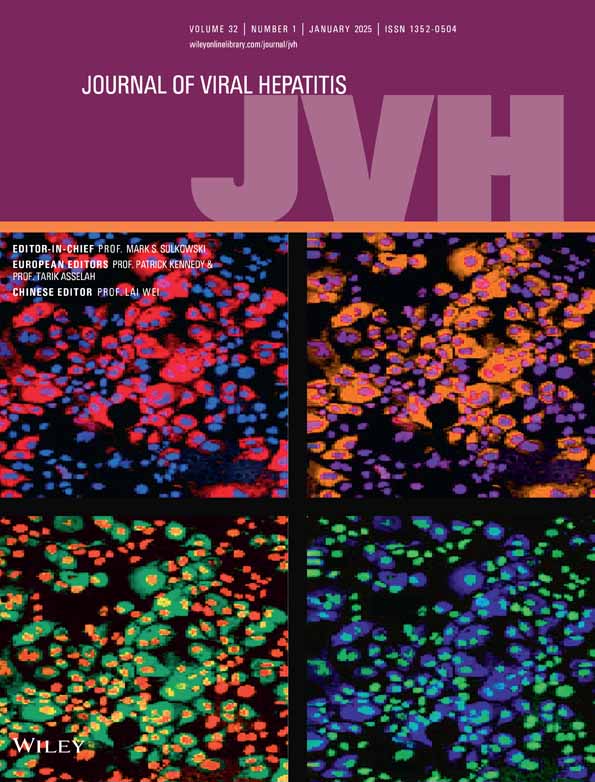Changes in Serum Rheumatoid Factor Following Eradication of Hepatitis C Virus Infection With Interferon or Direct Antiviral Therapy
Ying-Nan Tsai and Jamie Chieh Lo have contributed equally to this work.
Funding: This work was supported by E-Da Hospital (EDAHS109002); Gilead Sciences (IN-TW-988-5614); Taiwan Ministry of Science and Technology (107-2314-B-650-014-MY3); Taipei Institutes of Pathology (TIP-109-002) and Tomorrow Medical Foundation (TMF2021P01).
ABSTRACT
Hepatitis C virus (HCV) infection is associated with a myriad of extrahepatic manifestations (EHM), as well as the production of autoantibodies, including rheumatoid factor (RF). This study aims to elucidate whether serum levels of RF change before and after HCV eradication, and whether these changes differ according to the type of therapy used. This is a retrospective cohort study of adults with chronic HCV infection treated with interferon-free or interferon-based regimens. All patients had HCV viremia at baseline and documented sustained virological response (SVR) 12 or 24 weeks after completing treatment. We measured the serum levels of RF at baseline and at SVR-12 or −24 to analyse the changes after eradication. This study enrolled 297 patients (median age, 59 years; female, 48.5%; cirrhosis, 16.8%). Among them, 78 (26.3%) were RF-positive by qualitative serology at baseline. This number decreased to 49 (16.5%) at SVR-12 or −24 (p < 0.001). Quantitatively, the median RF also decreased from 1.6 IU/mL (interquartile range [IQR], undetectable—15.8) to undetectable (IQR, undetectable—6.6 IU/mL) (p < 0.001). Significant reductions were observed in both groups. The proportion with RF seropositivity decreased from 24.3% to 15.4% (p = 0.001) in patients treated with interferon-free agents (n = 214) and from 31.3% to 19.3% (p = 0.006) in patients treated with interferon-based regimens (n = 83), without significant difference between two groups (p = 0.40). Serum RF decreased after HCV eradication, regardless of treatment regimen. Our findings suggest that HCV eradication may attenuate HCV-related autoimmunity.
Conflicts of Interest
Jamie Chieh Lo has received travel funding from Gilead and the World Hepatitis Alliance. Cheng-Hao Tseng has received lecture fees from Abbvie, Bristol-Myers Squibb, Gilead Sciences, Bayer and Roche. Mindie H. Nguyen has received research support from Pfizer, Gilead Sciences, Enanta, Vir Biotech, Glycotests, B. K. Kee Foundation and the National Cancer Institute and has served as an advisory board member or consultant for Gilead, Intercept, Novartis, Eisai, Bayer, Exact Science, Laboratory of Advanced Medicine, Spring Bank and Janssen. Yao-Chun Hsu has received research grants from Gilead Sciences, lecture fees from Abbvie, Bristol-Myers Squibb, Gilead Sciences and Novartis and has served as an advisory committee member for Gilead Sciences. The rest of the authors declare no conflicts of interest.
Open Research
Data Availability Statement
The data underlying this article will be shared on reasonable request to the corresponding author.




